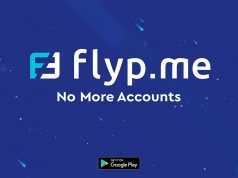LinkedIn is starting to provide the option to buy display ads programmatically for desktop devices for advertisers. Furthermore, marketers will have the opportunity to buy display ads through an open auction or private auctions on LinkedIn through first- or third-party data. Naturally, there will be possibilities like LinkedIn’s targeting of audience segments, like visitors of the LinkedIn home page.
Testing started in the Q3 2015 with tech advertisers for both software and hardware, as well as for other industries like telecoms or financial services. As head of products at LinkedIn – Russell Glass stated, the service is part of a two- to three-year overhaul of the company’s ads business and its major aim is to make is easier and wider to advertise on the platform. He added that range of LinkedIn’s professional network together with a logged-in audience remains still attractive to B2B marketers.
“We don’t want to reinvent the wheel,” he said. “We want to build table stakes capabilities into our platform in a way that highlights our differences, but is kind of what marketers have come to expect.”
As a good example is the LinkedIn Account Targeting product from March, allowing marketers to run native ads and to use them to target user profiles based on which companies they are intending to hit. LinkedIn Q1 2015 earnings report showed that advertising through LinkedIn Marketing Solutions reached an increase of 29 % on a yearly basis to total $154 million. Sponsored content now reached even 56% of the total revenue.
While this information is the first time LinkedIn has offered programmatic for display ads, it has already been providing this service for sponsored content, what is an essential part in the company’s advertising business that jumped 80% over the year during the Q1. Comparably to its competition, mobile is now accounting for over 50% of total traffic and after the Q1 it reached exactly 55%.
And then there are also numerous possibilities of how LinkedIn could take advantage of Microsoft capabilities (as Microsoft has announced in June that it plans to acquire LinkedIn for $26.2 billion, what is one of the biggest tech industry agreements in history). Glass did not want to mention what products will be prepared. Besides being in a very competitive position due to this merge (like huge competitor Salesforce), there may occur also many advertising benefits too.
“If you think about Microsoft being the world’s leading professional productivity cloud and you think about LinkedIn being the world’s leading professional network, it doesn’t take much of a leap to think about the opportunities that are possible by bringing those two things together,” Glass added.
Albeit the revenue from advertising could be seen increasing, growth seems to provide more disappointment. As the eMarketer mentioned in his report from the beginning of 2016, LinkedIn with approximately 430 million users has reached one of the slowest growth rates, but ad revenues are seen to rise 20.5 % in 2016 and 17.8 % in 2017.
Twitter and Facebook, major social network competitors, seem to be growing much faster, with Twitter ad revenue seen to jump even 45 % in 2016 and Facebook with 31.5 %, according to eMarketer.
However, eMarketer pointed out in his report that LinkedIn saw one of the fastest mobile growth rates in the US during 2015, with the revenue hiking 170 %. This year, eMarketer sees it to be closer to the national average, reaching a growth of 35.4 % and getting behind Facebook and Twitter.
“The bigger you get, the harder it is to grow,” Glass added when asked about the slowdown. “And at the same time, we’re still growing at a hyper growth tick. I think that is really driven by the unique nature of this platform, and the differentiating nature of what we can deliver to marketers, particularly in our audience and our content.”












